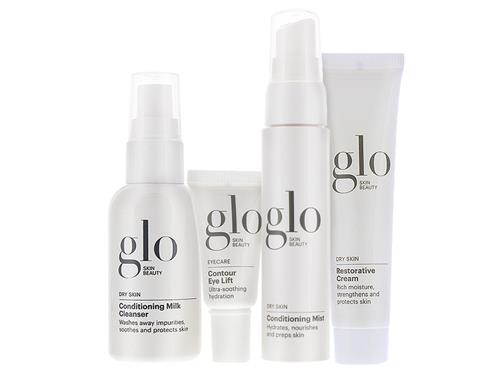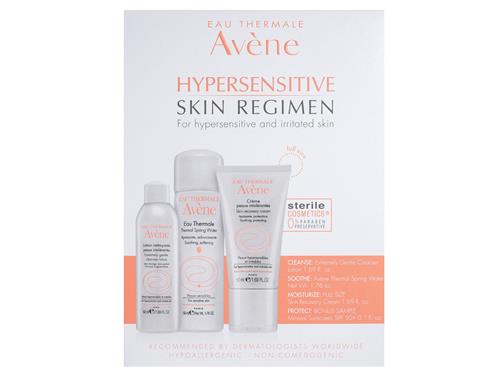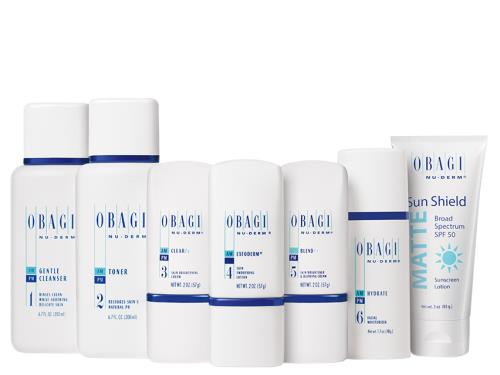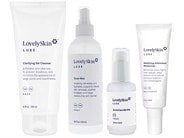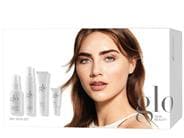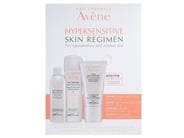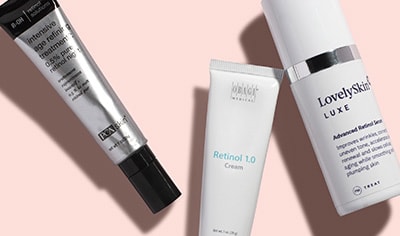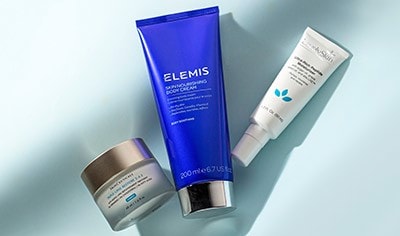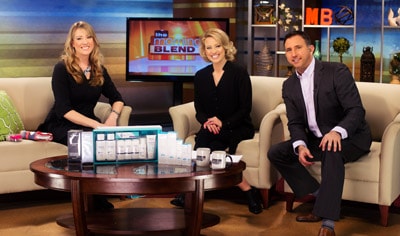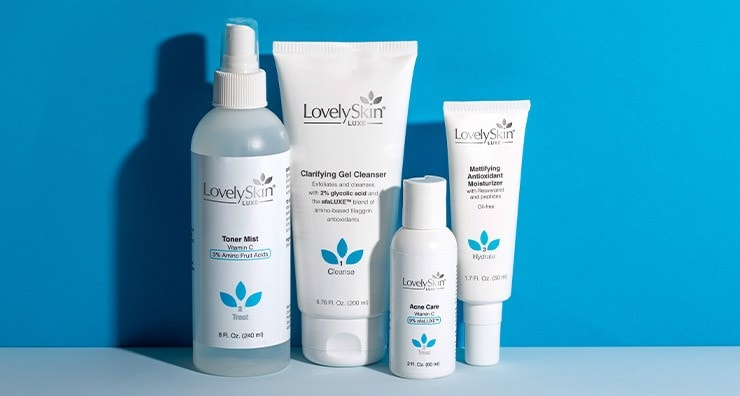
Have you always wondered how to tell your skin type or what type of skin do I have – normal, oily, combination, etc.? Well, as it turns out, the usual ways of classifying skin to answer these age-old questions may not be as helpful as you think. In this blog post, we’ll answer common questions to help you better understand how to know what type of skin you have, including:
- What board-certified dermatologist Dr. Joel Schlessinger thinks about skin types
- The distinction between skin conditions and skin types
- How to identify and manage dry skin as a skin condition
- How to identify and manage eczema, rosacea-prone or sensitive skin conditions
- How to identify and manage acne-prone skin as a skin condition
- How to identify and manage melasma as a skin condition
From what you read on the packaging of skin care products and the sheer number of “What is my skin type?” quizzes on the internet, it would be easy to assume that skin types—normal, dry, oily, combination, etc.—are all you need to know when it comes to skin care.
While these popular skin type classifications may dominate how some skin care companies market their products, it’s not actually that cut and dry to classify what type of skin you have in the dermatologist’s office.
Skin Types in the Dermatologist’s Office
“I am not a believer in skin types, per se,” says board-certified dermatologist and LovelySkin CEO, Dr. Joel Schlessinger. “I do not believe there is an easy answer to ‘What type of skin do I have?’ While it is simple to label someone, it may be quite simplistic, ignoring nuances of what makes skin show these characteristics. Think of it as how we interpret a ‘good movie’ vs. a ‘bad movie’, or a ‘fancy meal’ vs. a ‘plain meal.’ There’s lots of variation within these terms and though they are used often, they aren’t very effective measuring sticks. The same goes for these so-called skin types.”
Skin Conditions vs. Skin Types
Though you may still be wondering how to tell what skin type you have, finding your answer to this age-old question may not be as helpful when it comes to determining what your skin actually needs. “No one is born with a type of skin, really, but you may have skin conditions that determine which products are best for you,” Dr. Schlessinger says.
Instead of fixating on how to know your skin type, it’s more accurate to think about what your skin needs in terms of its conditions. Read on to learn about four common skin conditions, how to tell if you have them, and products that could help soothe these skin concerns to promote healthier, more comfortable skin.
Skin Condition #1: Dry Skin
Does your skin often feel tight after cleansing, or do you notice patches of skin that look flaky, dull, rough or maybe even scaly? These could all be signs of dry skin, a condition in which your skin lacks enough sebum to retain a normal level of moisture. People commonly confuse dry skin with dehydrated skin, but dry skin may be a sign of having tendencies towards other skin conditions, such as eczema or atopic dermatitis. There are some products, however, that can help.
Try: Glo Skin Beauty Dry Skin Set
This four-piece skin care regimen helps condition and moisturize dry skin. The Conditioning Milk Cleanser thoroughly yet gently cleanses skin, while the Conditioning Mist helps hydrate using hyaluronic acid and glycerin.
This set also includes the Restorative Cream, which works to seal in moisture using shea butter and jojoba oil, and the Contour Eye Lift, a brightening eye cream that helps smooth crow’s feet and fine lines.
Skin Condition #2: Acneic or Acne-Prone Skin
If your skin breaks out often—whether it’s blackheads, whiteheads or full-blown pimples—then you’ll have the best results from using products geared specifically toward helping treat and prevent acne. Acne has a range of causes and can even be caused by misdiagnosed skin issues such as infection, hormonal issues or simply bad skin care, according to Dr. Schlessinger.
Try: LovelySkin LUXE Acne Care Kit
This four-piece collection was developed by LovelySkin’s own Dr. Schlessinger. The key ingredient featured in all of these products—the Clarifying Gel Cleanser, Acne Care Gel, Toner Mist and Mattifying Antioxidant Moisturizer—is afaLUXE™, a dermatologist-developed molecule that gently exfoliates to help treat existing acne and reduce the potential for future breakouts. With consistent use, you can expect to see the appearance of a clearer complexion with fewer clogged pores and blemishes. Dr. Schlessinger feels that if an over-the-counter regimen, whatever it is, doesn’t help acne, then it may be time to see your dermatologist for expert advice and diagnosis.
Skin Condition #3: Eczema, Rosacea-Prone and Sensitive Skin
If your skin is sensitive, chances are that you’ve noticed some of the telltale signs already. For example, your skin may be reactive, meaning it turns red, feels irritated or stings when you use certain products or fragrances. You may have an allergy to a specific ingredient, or you may have a skin condition such as rosacea, psoriasis, eczema or atopic dermatitis, which your dermatologist can accurately diagnose. While these conditions may seem completely different, there are common skincare solutions designed to support a healthier skin barrier to help soothe symptoms and encourage overall improvement.
Try: Avene Hypersensitive Skin Regimen
“This line is specially formulated to contain fewer chemicals,” Dr. Schlessinger says. Many of Avene’s products are packaged with one-way valves that allow product to be dispensed without allowing air into the pump. “This allows for the use of fewer, if any, preservatives. While we want our skin care products to be fresh, preservatives have the potential to harm sensitive skin or cause flare-ups for eczema-prone skin. While this may seem an obvious concept, very few, if any, companies do this. Avene is manufactured in a clean room with workers that wear special suits and garb to avoid contamination. Its manufacturing process is in a league of its own!”
This three-piece kit from Avene includes the Extremely Gentle Cleanser Lotion, a daily cleansing gel formulated to help sweep away makeup and dirt without aggravating sensitive skin conditions.
It also contains Thermal Spring Water—a multipurpose product that is derived from ancient springs in the south of France, that can be used to help set your makeup, promote better hydration or help soothe eczema symptoms or other skin irritations. It works alongside the Skin Recovery Cream, a gentle hydrating treatment.
Skin Condition #4: Melasma
Do you have dark patches on your face that won’t seem to ever go away? If this sounds like you, then these dark patches could potentially be melasma, a type of hyperpigmentation that is often characterized as ‘sun damage.’ If your dermatologist diagnoses you with melasma, they will typically go over your full medical history to determine what could be triggering it (e.g., medications, hormones, sun exposure) before recommending or giving you the green light to try topical treatments.
Try: Obagi Nu-Derm Fx Starter Set
This seven-step skin care regimen includes two melasma-targeting brightening treatments powered by arbutin and lactic acid: Obagi Nu-Derm Clear Fx is recommended for morning use, while Obagi NuDerm Blend Fx is a heavier cream designed for its best application at nighttime. This set also includes an Obagi foaming gel cleanser, toner, facial moisturizer, sunscreen and exfoliating lotion. “Obagi is my No. 1 recommendation for patients with melasma,” Dr. Schlessinger says. “It is a very effective product line with proven results.”
This is just a simple explanation of what dermatologists may use to determine the myriad of choices they have when recommending a skincare product to patients. Having said this, Dr. Schlessinger uses these products in his own practice on a regular basis for the majority of his patients, and now, this information can offer clues and possible options for you!
Sunscreen is also an essential part of every skin care regimen. Learn what Dr. Schlessinger recommends in his own practice while learning more about the best sunscreens for oily, dry, acne-prone and rosacea patients.
Shop this blog
Hydrating vs. Moisturizing: What's the D...
How to Get Clear, Smooth Skin with Masks...
Follow us on social
Follow us on social networks and be one of the first to learn about sales, giveaways, and free samples

